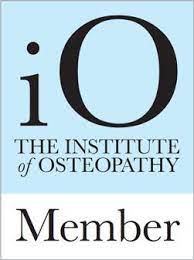It is commonly said and heard that running will wear out joints and causes arthritis. This is most commonly said about knees, but also quite often applied to hips and lower backs also.
The thinking behind these statements is that running is a high impact activity, and many runners experience joint pains. This leads many people, including runners and even some health professionals to thinking that this impact is likely to lead to increased wear and tear in joints and risk of arthritis. The truth however, is quite different.
There have been a lot of studies on this subject and the consensus based on scientific research is not only that that running is not associated with arthritis and joint damage, but that it is actually protective of it and increases joint health with runners having healthier joints and lower levels of arthritis than sedentary individuals.
In this blog post we are going to very briefly review three key pieces of research and what we should take from them.
Runners are 50% less likely to need surgery for knee arthritis:
This study (here) was a systematic review, considered to be the gold standard of scientific research (reviewing a number of high quality studies on the subject). The researchers were looking for connection between running and knee osteoarthritis (OA). It found that running is not associated with increased risk of arthritis. It was unclear from these studies whether running reduced arthritis risk. However, an interesting additional finding was that runners who do have knee arthritis are 50% less likely to require surgery than sedentary individuals with the same condition.
Recreational running reduces risk of hip and knee arthritis:
This study from 2017 (here) (another high quality systematic review) looked at hip and knee osteoarthritis in elite level competitive runners, recreational runners, and sedentary individuals. The findings were really interesting in that they showed that recreational runners had significantly lower levels of hip and knee OA than either sedentary individuals or elite competitive runners. So, whilst recreational running (which can still involve a lot of running, including several marathons) had protective effect improving joint health and reducing arthritis risk, at the elite level the risk
goes back up again. This will be unsurprising to anyone who has been involved in any physical sport at this elite level, as elite level athletes in all sports have to push themselves and their bodies incredibly hard and there is often a price to pay for that. Though it is not so great news for the elite runners, it is really good news for keen, and even not so keen recreational runners
Running increases health and strength of spinal discs:
The final study (here) looked looked at the effects of running on spinal discs. This was the first of its kind, and very well designed. This study showed quite conclusively that running increased the strength and health of the intervertebral discs of the lumbar spine.
But, I started running and I got joint pain:
Although running is actually good for joints, it is true that a lot of runners experience joint pains. As good for us as running is it does place large forces on the body. If these forces are not progressed gradually, and we do not give our body the appropriate rest and recovery we need then it can lead to various joint pains and “overuse injuries”.
These pains are usually due to tissue irritation rather than joint damage. An example I often give in clinic is that if you were to repeatedly poke yourself in the same spot you would not wear that part of your body out, or cause any structural damage to it. It would however at some point become sensitive and irritated, and some inflammation may develop. This is a fairly accurate way of thinking about what is happening in the common running injuries. Joints are not becoming damaged or worn-out, but rather tissues are becoming irritated, sensitive and inflamed. This can be resolved with a well-designed treatment programme that takes into account the key aspects of effective running injury treatment (see our running injuries page here for more info on what these are)
Conclusion:
The research shows quite clearly that running is not associated with increased risk of osteoarthritis. At recreational levels it has a protective effect on hip and knee, and it reduces risk of / need for surgery in runners who do happen to develop it. Running has also been shown to increases the strength and health of intervertebral discs.
It is common knowledge that running is good for cardiovascular as well as mental health. The evidence shows that is also good for joint health, hopefully this will become common knowledge in the future. Until then we should learn to ignore the “it will wear your knees out” comments, and keep running safe in the knowledge that the science says otherwise. If you do experience joint pains when running consult a proefessional and with the right treatment and guidance expect to make a good recovery and be able to continue running.
References:
1) Alentorn-Geli E., et el, 2017. The Association of Recreational and Competative Running With Hip and Knee Osteoarthritis: A Systematic Review and Meta-analysis
2) Blevavy D L., et el, 2017. Running exercise strengthens the intervertebral disc
3) Timmins K A., et el, 2016. Runnning and Knee Osteoarthritis: a Systematic Review and Meta Analysis










